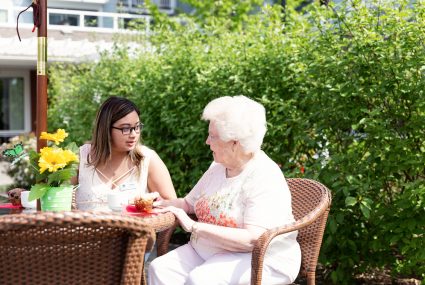We often hear about diabetes as an issue for people of all ages, but it is of particular concern for seniors. To understand why it’s an important thing to watch out for, we first need to understand what it is. Diabetes a chronic condition in which the body either doesn’t produce enough insulin or is unable to use it properly, which leads to high blood sugar levels. In turn, high blood sugar levels can cause all sorts of awful symptoms and can lead to scary complications such as eye damage, kidney damage, cardiovascular disease, and neuropathy.
When we talk about diabetes in the elderly, we usually mean type 2 diabetes. Type 2 diabetes is also known as adult-onset diabetes because nearly 95% of people diagnosed with type 2 diabetes are adults. Risk factors for this type of diabetes include advanced age, being overweight, physical inactivity, race/ethnicity, and a family history of diabetes.
Symptoms of Type 2 Diabetes
In many cases, people with type 2 diabetes can go undiagnosed for quite a while. This is likely because many people just don’t display any obvious symptoms right away. Over time, these symptoms will start to pop up. Here’s what to watch for:
- Feeling tired all the time
- A drastic increase in appetite
- Increased levels of thirst
- An increased need to urinate
- Blurred vision
- Pain or numbness in the hands or feet
- Erectile dysfunction in men
If you notice any of these symptoms in yourself or a loved one, make an appointment to see your doctor right away. If your doctor suspects that you might have type 2 diabetes, the first step is typically to get your blood sugar levels tested. This is most often done via a fasting blood glucose test, hemoglobin A1c test, or an oral glucose tolerance test.
Living With Type 2 Diabetes
Type 2 diabetes is treated through a combination of 3 methods: dietary changes, exercise, and medication. There’s no way around it- patients will need to undergo some immediate lifestyle changes.
The first major change for those with type 2 diabetes is to learn how to monitor blood sugar levels. This must be done at regular intervals through at-home self-testing with a glucometer. Patients must learn to record their levels so they are able to tell how well the treatment is working. Most doctors begin treatment with changes to the diet and activity levels since weight loss can often keep blood sugar levels stable. The standard diabetes diet places an emphasis on vegetables, whole grains, and lean proteins while avoiding sugar and high-fat foods.
However, weight loss, improvements in diet, and exercise aren’t always enough. In this case, medication is needed. There are a variety of medications that are used to treat type 2 diabetes, such as sulfonylureas, metformin, alpha-Glucosidase Inhibitors, thiazolidinediones, and meglitinides, which are all designed to lower blood sugar levels in different ways. In more advanced cases where these medications don’t work, insulin injections may be the suggested course of treatment.
Prevention of Type 2 Diabetes
The good news is, there are things you can do to lessen the risk of developing type 2 diabetes. The main thing you can do to prevent it is to maintain a healthy weight. The easiest way to do this is to eat a healthy diet and make sure you get plenty of exercise. You can also find ways to keep your stress levels low. As we all know, increased stress can cause us to abandon our healthy lifestyles and gain weight, so it’s important to have ways to manage your stress levels. Activities like meditation, tai chi, yoga, and dancing are all great ways to keep yourself calm and happy.
How Bria Communities Works to Prevent Type 2 Diabetes
At Bria Communities, we work with nutritionists to plan menus that address the special dietary needs of seniors, including those with diabetes. Our regular menu incorporates the basics of the standard diabetes diet into all our daily meals. Our chefs consider portion size, carb control, and lean proteins as part of their planning, which means everyone can enjoy the menu selections. When we have residents that have further dietary restrictions, we work with them to create meals to suit their specific needs.
We also encourage all our residents to keep fit and stay active. Our residents have plenty of opportunities to get involved in exercise classes or use the gym facilities on their own. Residents often organise their own activities such as walking groups, so they can get exercise while having fun with friends.

Comments